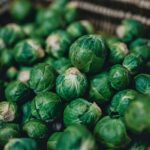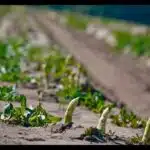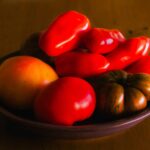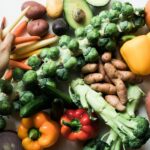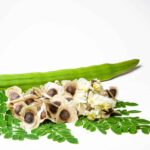Brussels sprouts are a delicious and nutritious vegetable that can be enjoyed year-round. They’re packed with vitamins and minerals, making them an excellent addition to any meal. But how do you go about growing your own bounty of Brussels sprouts? Fortunately, it’s not as difficult as you might think! With just a few tips and tricks, it’s easy to learn how to cultivate your own healthy crop of these tasty vegetables.
In this article, we’ll provide step-by-step instructions on how to grow Brussels sprouts in your own garden or backyard. We’ll also discuss the different types of soil and climates that work best for growing this particular vegetable. Finally, we’ll provide some essential tips on how to care for your Brussels sprouts plants so they produce the most bountiful crop possible.
So if you’re ready to enjoy your own homegrown Brussels sprouts this season, read on! This helpful guide will provide all the information you need in order to make sure that your plants thrive and produce a delicious harvest of this nutritious vegetable.
What Are Brussels Sprouts?
Believed to have originated from Brussels, Belgium in the 16th century, Brussels sprouts are a popular vegetable enjoyed by many. It is estimated that about 11.2 million tons of this vegetable is produced annually worldwide.
These vegetables are small, green and have a strong flavor when cooked. Each one is usually no bigger than two centimeters in diameter and can be found on long stalks or sold pre-packaged as individual sprouts. They can be boiled, steamed, roasted or eaten raw and can be served as an accompaniment to any meal.
The popularity of Brussels sprouts has been rapidly increasing as more people discover their nutritional benefits; they contain many vitamins, minerals and fiber and are also low in calories. With these facts in mind, let’s explore what conditions are best for growing them in your own garden.
What Conditions Are Best For Growing Brussels Sprouts?
Like a miniature, Brussels sprouts are something to be admired and treasured! With the right conditions, they can become a bounty of delicious vegetables. But what do they need to thrive?
Well, first and foremost, Brussels sprouts require full sunlight with at least six hours of direct light each day. They also require plenty of water and well-draining soil with a pH level between 6.0 and 7.5. To ensure the most nutrient-rich soil for your Brussels sprouts, it is advised to add compost or manure before planting.
Additionally, if you want your Brussels sprouts to develop their best flavor, it’s important to keep them from being overwatered or exposed to extreme temperatures. To help maintain an ideal environment for growth, cover the rows of plants with a thin layer of mulch every few weeks during dry spells.
So whether you’re looking for a way to spruce up your garden or just looking for something new to add to your dinner table, growing Brussels sprouts can be both rewarding and delicious! With these tips in mind, you’ll be able to create an ideal environment that will produce a bounty of tasty treats in no time!
Where To Plant Brussels Sprouts
Growing brussels sprouts is like riding a rollercoaster – it can be a thrilling experience! Before you get to the fun part, though, it’s important to consider where you should plant your sprouts. Knowing the best location for your plants will ensure that they thrive and give you a bounty of delicious vegetables.
When selecting an area for planting, look for one with full sun exposure. Brussels sprouts need at least 6 hours of direct sunlight each day to produce their best yields. Additionally, make sure to choose a spot that has well-draining soil that is rich in organic matter and slightly acidic pH levels.
Finally, be mindful of the amount of space required by the plant when selecting your planting site. Each brussels sprout plant can grow up to 2 feet tall and wide, so be sure to leave enough room between them for proper air circulation. With these tips in mind, you’ll have no problem finding the perfect spot for your brussels sprouts! Now that you’ve chosen a location, it’s time to learn how to properly plant them.
How To Plant Brussels Sprouts
It’s time to get planting those Brussels sprouts! Planting them is easy and fun. First, you’ll need to prepare the soil for your sprouts by tilling it and ensuring there are no weeds or rocks in the area. This will make sure that your sprouts have plenty of room to grow and won’t be competing with other plants or debris. You also want to make sure the soil is moist enough for your sprouts to thrive.
Once you’ve prepared the soil, you can start planting your Brussels sprouts! You want to plant them at least 12 inches apart so they have plenty of space to grow and not compete with each other. Make sure the hole you dig is wide and deep enough for the root system of the sprout and fill it up with some compost if needed. Place the seedling in gently, making sure not to damage any of its roots. Water it thoroughly right away after planting it so that its roots can start absorbing moisture from its new home.
When everything is done, add a layer of mulch around each seedling – this will help keep moisture in and prevent weeds from growing around them. With these steps, your Brussels sprouts should be on their way to becoming a bounty soon! Now, all that’s left is determining when exactly to plant them for optimal results…
When To Plant Brussels Sprouts
Unfurling like a magical garden secret, Brussels sprouts are a great addition to any backyard. Planting them at the right time is key to ensuring their success and watching your bounty grow.
As summer’s heat gives way to fall’s chill, the time for planting has arrived. Knowing when and where to plant Brussels sprouts is essential for harvesting that tasty reward. Gardening in colder regions should begin with seeds or seedlings in late August or early September; warmer regions can hold off until October or November. Planting in well-drained, nutrient-rich soil will give each sprout room to grow, while keeping them watered and weeded will ensure they reach their full potential.
Though the end of summer may bring sadness and regret, it also marks the beginning of Brussels sprouts season! By arming yourself with knowledge of when to plant these delicious morsels, you’ll be rewarded with a bounty that will last through winter and beyond.
How To Water Brussels Sprouts
As the saying goes, ‘you reap what you sow’. The same applies to Brussels sprouts. To help ensure that your crop yields a bounty of these delicious veggies, you must be diligent in watering them properly. So how do you water Brussels sprouts? Let’s explore!
The key is to make sure they are getting enough water without over-saturating or drowning the soil. To do this, provide 1-2 inches of water per week when there is no rainfall. During dry periods, increase the frequency but only slightly – about an extra inch per week. It’s best to use a soaker hose or drip irrigation system for optimal results. Additionally, avoid wetting the foliage as much as possible in order to prevent diseases from forming.
When it comes time to harvest your Brussels sprouts, you’ll be glad that you took the time to get your watering technique down pat! Following these simple steps will give your plants the hydration they need and ensure that you reap a reward of tasty veggies come fall. Now on to fertilizing…
How To Fertilize Brussels Sprouts
Fertilizing brussels sprouts is an important step in ensuring a bountiful harvest. As with other vegetables, they need the right amount of nutrients at the right time to promote growth and fruit production. Here’s how to do it.
The best time to fertilize brussels sprouts is when they are planted and again two weeks later. The most important nutrients for these plants are nitrogen, phosphorus, and potassium. If you’re using a pre-mixed fertilizer for your garden, simply follow the directions on the package as to how much you should use. Alternatively, you can use a combination of organic materials such as compost or manure to provide the necessary nutrients.
Once your plants have grown larger and started to produce fruit, you can continue fertilizing them every few weeks with additional nitrogen-rich fertilizer or a mild solution of liquid seaweed extract. This will ensure that your plants remain healthy throughout their growing season and will help them produce lots of big, tasty sprouts!
With proper fertilization in place, it’s now time to thin out your brussels sprout plants so each plant has enough space to grow without being overcrowded.
How To Thin Brussels Sprouts
When it comes to growing a bounty of Brussels sprouts, thinning is an important step. Take the case of Dan, a home gardener who was recently trying to grow his own Brussels sprouts. As soon as he noticed the seedlings emerging from the soil, he knew he had to start thinning them out.
Thinning out your Brussels sprouts is actually quite simple. When the seedlings are about two inches tall, you should begin to pull them up, leaving one plant every six inches or so. This will ensure that each plant has enough space to receive adequate sunlight and nutrients for optimal growth. Additionally, removing excess plants also helps prevent overcrowding, which can lead to disease and pests in the garden.
To make sure your plants are getting enough water and nutrients, it’s important to use a liquid fertilizer when thinning out your Brussels sprouts. Applying this fertilizer will help keep the soil moist and provide essential nutrients like nitrogen and potassium that will help your plants thrive. With proper care and attention, you can easily grow a bountiful harvest of Brussels sprouts in no time!
How To Control Pests And Diseases
Who’d have thought that the most adorable of vegetables would require such diligence? When it comes to growing brussels sprouts, one cannot ignore the importance of controlling pests and diseases. After all, nothing ruins a bounty of produce quicker than an infestation. So what can we do to protect our precious sprouts?
First and foremost, be vigilant in checking for signs of pests or diseases. Look out for holes in leaves and other signs like discoloration or wilting. If you see any of these symptoms, take steps to immediately remove the affected plants from your garden. This will help keep the rest of your crop safe from any further damage.
Next, use proper garden hygiene practices to ensure that your soil is healthy enough for your brussels sprouts to grow in. Make sure to rotate crops every season and clear away any dead plant matter from the previous year. Also, consider using natural pest control methods such as companion planting with herbs or confining animals like chickens that eat insects away from your brussels sprout patch. With proper care and attention, you should be able to get rid of pests and diseases before they cause too much harm to your plants.
With prevention taken care of, it’s time to move on towards harvesting a delicious bounty of brussels sprouts!
How To Harvest Brussels Sprouts
Harvesting your brussels sprouts is the final step in growing them, and it’s important to do it correctly. If you harvest too early, the sprouts won’t have had enough time to reach their full size and flavor. If you wait too long, they can start to go bad. When harvesting, make sure you use scissors or a sharp knife to cut off the stalk at the base of each sprout. You’ll want to check regularly for any signs of disease or pests as well.
You should also keep an eye on the color of your sprouts; they should be dark green and firm when ready for harvest. If they’re yellow or wilted, they’ve been left out too long and aren’t ideal for eating. Finally, be aware that some varieties don’t ripen all at once, so you may need to come back multiple times over a few weeks to make sure you get all of them before the cold weather sets in.
Harvesting brussels sprouts takes some patience and attention, but with careful monitoring and harvesting techniques, you can enjoy a bounty of fresh sprouts this season! With these tips in mind, you’re now ready for some tips on how to get the best results from your plants.
Tips For Best Results
It’s a beautiful autumn morning, and you’re ready to reap the rewards of your labor. After months of meticulous care and attention, you’ve finally cultivated a bounty of Brussels sprouts – and now it’s time for the payoff. Here are some tips for harvesting them for the best results.
First off, choose your sprouts carefully. Pick ones that are firm to the touch and have bright green leaves with no signs of yellowing or wilting. If they’re too small, leave them on the plant to grow bigger; if they look like they’re starting to lose their crunchy texture, it’s time to pick them.
Next, make sure you harvest at the right time. Brussels sprouts should be harvested before the first frost of autumn or when temperatures start to dip below 40 degrees Fahrenheit. Don’t wait until after a cold snap as this will affect their flavor and texture. Also, avoid harvesting in heavily rainy conditions as this can cause them to rot quickly.
Finally, handle your Brussels sprouts with care while harvesting. Be gentle when picking them off the stalk so that you don’t damage any nearby buds or leaves, which could affect future harvests. Once you’ve removed them from the plant, store them in an airtight container in a cool place until ready for use – preferably within two days of harvest for maximum freshness!
Common Problems
As the old adage goes, ‘where there’s a will there’s a way’ – and growing Brussels sprouts is no exception. With these twelve tips in your toolkit, you can navigate any of the common problems that come with growing these tasty little treats.
For starters, make sure to keep an eye out for pests like aphids and slugs. These critters can wreak havoc on your plants if they’re not taken care of quickly. Additionally, be sure to give your sprouts plenty of moisture and fertilizer as they grow. If they don’t get enough nutrients, they won’t reach their full potential.
Finally, it’s important to know when it’s time to harvest your Brussels sprouts. If you wait too long, they may lose some of their flavor or texture – but if you pick them too early, you’ll miss out on the deliciousness! With these troubleshooting tips in mind, you can enjoy a bounty of Brussels sprouts without any hiccups along the way.
Troubleshooting
Troubleshooting is an important part of gardening, especially when it comes to Brussels sprouts. If the plants are not producing the desired bounty, there are several steps you can take.
First, check the soil pH – Brussels sprouts prefer a slightly acidic soil. If necessary, adjust the pH with lime or sulfur. Additionally, ensure that your plants have enough room to grow: if they’re too crowded they won’t be able to reach their full potential.
Finally, keep an eye out for pests and diseases that can affect your crop – such as aphids or club root. Regularly inspect the leaves and stems of your plants and take action as soon as you spot any signs of trouble. With some extra care and attention, you’ll be well on your way to harvesting a bountiful crop of Brussels sprouts! From here, you can move on to learning about storage and preservation methods for keeping them fresh.
Storage And Preservation
Once your Brussels sprouts have been harvested, it’s time to think about storage and preservation. When storing them, make sure to keep them in a cool and dry place with plenty of air circulation. Place the sprouts in a sealed bag or container for best results. It’s also important to inspect the sprouts regularly for any signs of decay or other damage that could cause them to spoil quickly.
If you want to extend their shelf life, freezing the Brussels sprouts is an option. Blanching them first helps maintain their flavor and texture, but it isn’t necessary if you plan on cooking them within a few weeks of freezing. When freezing them, make sure they are tightly sealed and stored at 0°F or lower.
It’s also possible to preserve Brussels sprouts by pickling or canning them. Pickling is a great way to keep the flavor without adding too much sugar or salt, while canning allows you to enjoy the sprouts all year long. Both methods are simple and require just a few ingredients. With these easy steps, you can ensure that your bounty of Brussels sprouts will last as long as possible! Now that we’ve discussed storage and preservation, let’s move on to some delicious recipes for Brussels sprouts.
Recipes For Brussels Sprouts
The last H2 of this article is ’15. Recipes for Brussels Sprouts’. This section offers some great ideas to make the most of your harvest! The recipes range from simple side dishes to full meals, so you’re sure to find something that everyone in the family will enjoy.
One recipe is for a delicious and nutritious Brussels sprouts salad. It’s easy to make and packed with flavor. You’ll need Brussels sprouts, apples, feta cheese, pomegranates, and a citrus vinaigrette. This salad is perfect for lunch or dinner and can be served as a side dish or main course.
Another great option is a warm roasted Brussels sprouts dish. It’s made with olive oil, garlic, lemon juice, red pepper flakes, and fresh herbs. The flavors combine perfectly to create an incredibly tasty dish that’s both flavorful and healthy! Roasting the Brussels sprouts brings out their natural sweetness and makes them even more delicious.
If you’re looking for something special to serve at an event or holiday meal, try this creamy Parmesan-Brussels sprouts gratin recipe. It takes only minutes to prepare and is sure to impress your guests! With just a few simple ingredients like cream cheese, Parmesan cheese, garlic powder, and nutmeg you can have this luxurious dish on the table in no time at all.
Frequently Asked Questions
How Far Apart Should I Plant Brussels Sprouts?
It’s time to get growing – and there’s no better time than now to start planting Brussels sprouts. But when it comes to spacing them out, you may be feeling a bit in the dark. Don’t worry, we’ve got you covered! Planting your sprouts too closely together can mean they don’t get enough sunlight and air circulation, so it’s important to know how far apart they should be.
To ensure your Brussels sprouts thrive, plant each one about 12 inches apart. This is especially true if you’re growing them in rows – make sure you leave plenty of room for each individual plant. If you want to maximize yield and minimize space, try trellising your plants or using containers. That way, you can fit more on a balcony or patio without sacrificing quality!
When it comes to gardening success, a little knowledge goes a long way. Now that you know how far apart to place your Brussels sprouts, the sky’s the limit for what type of bounty you can grow! So take a deep breath and give it your best shot – with some patience and care, you’ll have a harvest of delicious sprouts in no time.
How Long Does It Take For Brussels Sprouts To Grow?
Growing Brussels sprouts successfully requires some patience, as it takes a while for them to reach maturity. Generally, the time from planting to harvest is around three months. It’s important to know this so that you can plan accordingly and give your plants enough time to grow before harvesting them.
To ensure that you are able to harvest a bounty of Brussels sprouts, the seeds should be sown directly into the ground after the soil has warmed up in early summer or in late spring if you live in an area with mild winters. As part of the preparation process, you’ll need to make sure that the soil is well-drained, loose and moist. After planting your seeds, you’ll need to provide adequate water and nutrients to your plants throughout their growing season.
It’s also important to keep an eye out for pests and diseases which may affect your Brussels sprouts crop. Disease-resistant varieties should be selected if possible and any affected leaves should be removed promptly. By following these steps and providing adequate sunlight, air circulation, water and nutrients, you can expect your Brussels sprouts crop to be ready for harvest in around three months’ time.
Do I Need To Stake Brussels Sprouts?
Growing a bounty of brussels sprouts might seem daunting, but with the right knowledge and care, you can have a great harvest. One of the things you need to consider is whether or not you need to stake your sprouts. But what does that entail?
Staking is when you use supports like poles or cages to keep your plants upright and standing strong. This can be especially important for taller varieties of vegetables like brussels sprouts. Without staking, the stems may bend over from their own weight and create an unappealing look in your garden. Additionally, it can help protect your plants from strong winds or heavy rains that could otherwise knock them down.
So should you stake your brussels sprouts? In many cases, it’s not necessary – but if you find that your plants are falling over due to their size and weight, then it’s probably a good idea to invest in some staking equipment. That way, your harvest will be healthy and abundant!
What Is The Best Fertilizer For Brussels Sprouts?
When it comes to growing a bounty of brussels sprouts, many gardeners are often left scratching their heads when it comes to what the best fertilizer is. After all, if you don’t get this part right, you’ll be stuck with a meager harvest!
Irony abounds here; while everyone knows that fertilizer is essential for a rich harvest, getting the right one isn’t always as easy as it seems. The truth is, there are so many options available that selecting the best one can be overwhelming.
The good news is that there’s no need to stress over picking the perfect fertilizer for your sprouts. The key is to find one that provides a balanced blend of nutrients and ensures your plants have the energy they need to thrive. There are a variety of organic and conventional fertilizers available in both granular and liquid form which offer the perfect balance for your Brussels sprout crop. So go ahead and give them the nutrition they need – you’ll be rewarded with an abundant harvest!
How Often Should I Harvest Brussels Sprouts?
Harvesting Brussels sprouts is an important part of growing them successfully. Knowing when and how often to harvest these vegetables is key to ensuring a bountiful crop.
The best time to start harvesting Brussels sprouts is when the sprouts are about 1 inch in diameter and firm to the touch. This typically occurs anywhere from two to three months after planting, depending on climate conditions. Once you start harvesting, it’s best to continue picking regularly until frost or cold weather sets in. This will help keep your plant healthy and encourage continued growth throughout the season.
You can harvest individual sprouts as they reach maturity, or cut off larger stalks of multiple sprouts at once. Be sure not to over-harvest, though; leaving some on the stalk will ensure continuous production throughout the season and a larger total yield by the end of it. With proper care and timely harvesting, you can look forward to plenty of delicious Brussels sprouts!
Conclusion
When it comes to growing Brussels sprouts, understanding the basics is essential to achieving a bountiful harvest. Knowing how far apart to plant them, when they should be staked, and what kind of fertilizer works best will ensure that your Brussels sprouts thrive. Furthermore, consistent harvesting throughout the growing season will keep the plants producing and will provide you with an abundance of Brussels sprouts for all your cooking needs.
The truth behind this theory is that with proper care and attention, Brussels sprouts can grow into a wonderful crop. Whether you’re just starting out or have been gardening for years, it’s important to understand the basics of planting and harvesting these vegetables so that you can enjoy their delicious bounty. With patience and dedication, we can all reap the rewards of our hard work in the garden!
In conclusion, growing Brussels sprouts doesn’t have to be difficult if we arm ourselves with knowledge about planting techniques and harvesting times. With some tender loving care, we can all enjoy a wealth of fresh Brussels sprouts this season!


